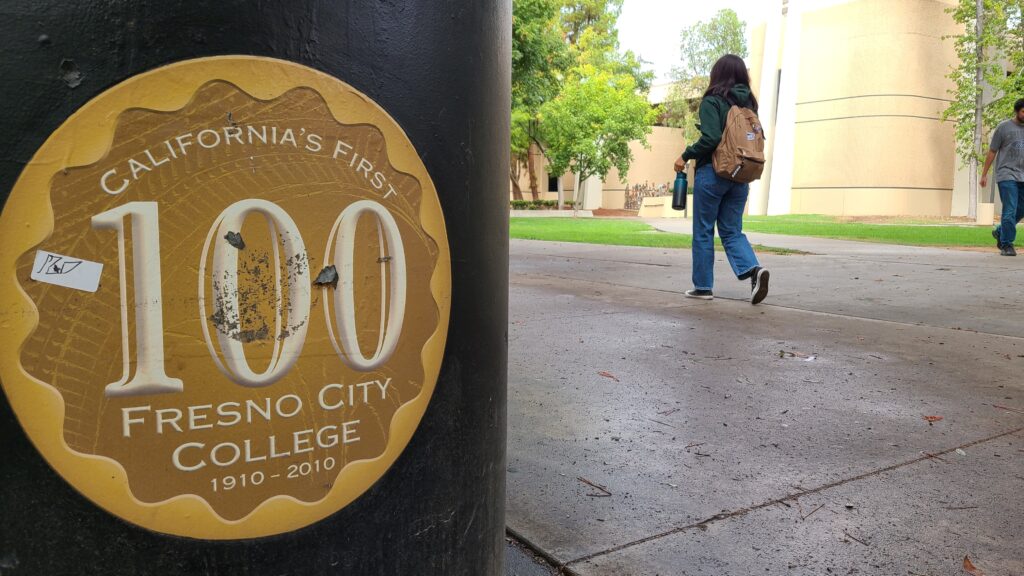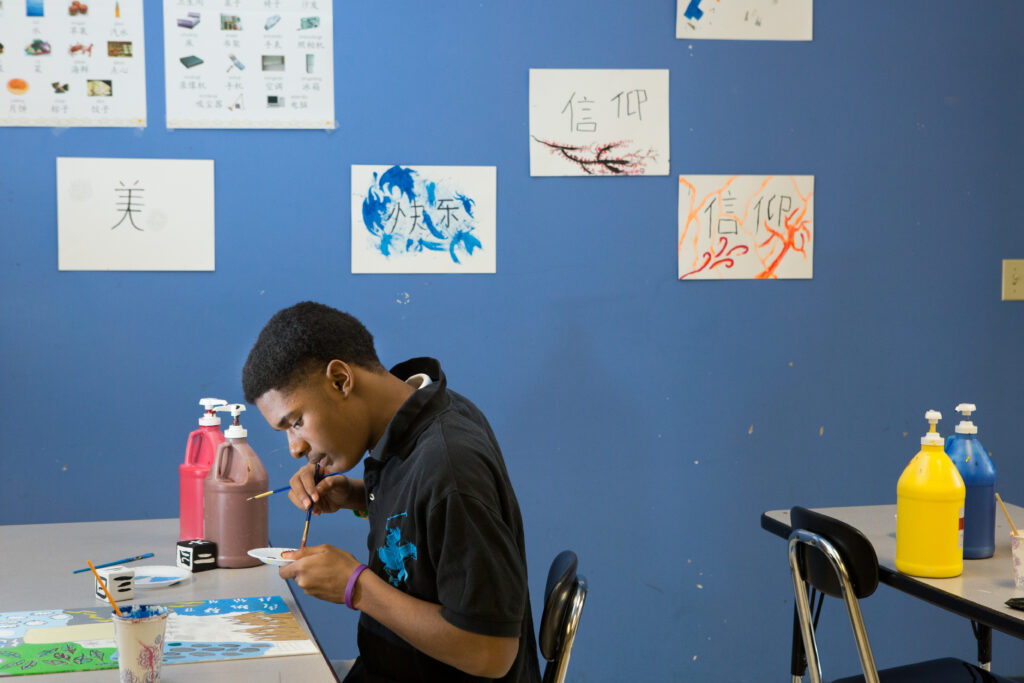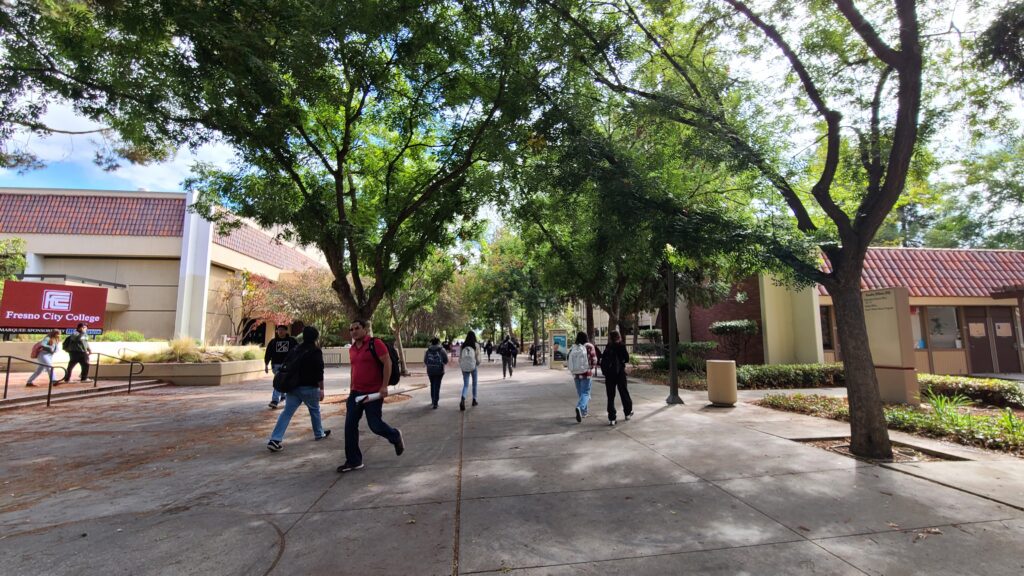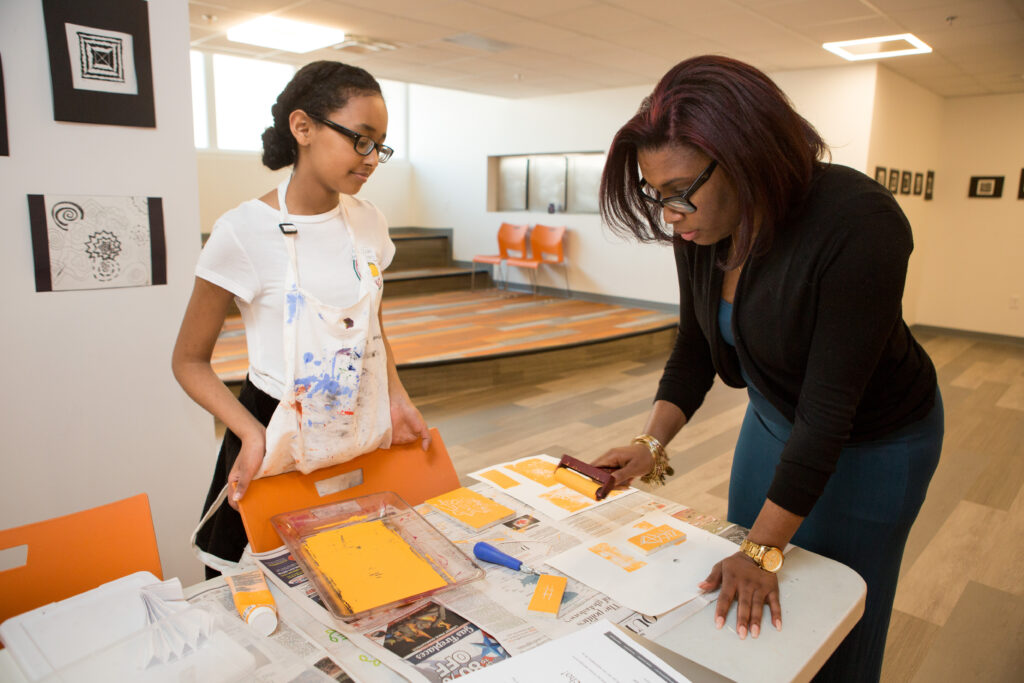
Fresno City College campus.
Credit: Ashleigh Panoo / EdSource
As enrollment rates across California’s community college system took heavy losses following the Covid-19 pandemic, colleges have focused on advertising their tuition-free access in recent months.
Tuition-free community college has been a reality for many students for several decades under the California College Promise Grant, which waives tuition fees for California resident students and non-residents under the California Dream Act who meet the needs-based criteria spelled out in the Free Application for Federal Student Aid, better known as FAFSA.
For students who don’t qualify for that grant, colleges have the option of using another pot of funding to waive tuition. The separate but similarly named California Promise, created under Assembly Bill 19 in 2017, set aside $46 million annually to be split among the state’s community colleges to support students.
Colleges get flexibility with how they spend their portion of the funds, but many are choosing to put theirs toward waiving tuition for students who don’t qualify for the Promise Grant, something administrators say is driving students back to their campuses following pandemic enrollment declines.
As of the current semester, all 116 California community college campuses offer some form of tuition-free education.
Thus far, it’s been well-received by students like Paige Stevens, a returning student at Folsom Lake College.
“I didn’t even know about it. I was set up on a payment plan, paid my first payment, and then the next time I checked my balance, it said it was paid by the California College Promise Grant. I had to look it up,” Stevens said. “Now that I received this financial aid, I was super excited and enrolled in another two classes to take advantage.”
While much of the data immediately following the pandemic focused on the massive drop in enrollment, which subsequently led to fears of funding cuts, enrollment in the state’s two-year colleges has begun to see a fresh increase, and many administrators point to the Promise Program.
Some campuses have gone a step further and offered awards to students who may not qualify for the Promise Grant program.
Since the 2020-21 semester, Diablo Valley College in Contra Costa County has been offering a “full-time free tuition award” that refunds tuition to students who are California residents, enrolled in at least 12 units, maintain at least a 2.0 GPA and follow an education plan. Marisa Greenberg, marketing and communications coordinator for Diablo Valley, said that more than 8,000 students took advantage of these programs at their campuses.
“DVC is experiencing a moderate increase in enrollment this semester, and although many factors impact enrollment, we are confident that the college’s free tuition programs have played a role,” Greenberg said in an email. “We know from conversations with students that receiving free tuition makes it possible for many students to either remain in college or to take more units, thereby accelerating their time to completing a degree or certificate.”
In the San Mateo County Community College District, tuition has been waived for all students, regardless of income, since the fall 2022 semester. Between the fall 2021 and fall 2022 semesters, there was an increase of about 1,500 students, or a 9.5% increase within the three district campuses, according to Chancellor’s Office data.
The enrollment increase continued in the spring 2023 semester, which saw another increase of 400 students. Spring semesters generally see a loss of enrollment, according to the data. The district’s ad campaign, as seen in mailers and online ads, has focused on pointing out that tuition is now free.
Chabot College in Hayward also has implemented tuition-free enrollment for first-year students, regardless of income.
“At Chabot College, we understand that the ability to pay or offset college expenses yields a greater probability of enrollment,” President Jamal A. Cooks said in an email. “We wanted to make sure to break down the barriers to postsecondary education,” he added, noting that it’s the path toward upward social mobility.
The strategy seems to be paying off as Chabot College’s enrollment remained steady between the 2021-22 and 2022-23 semesters, seeing only a slight drop of under 200 students.
Given that the state in 2025 plans to end its “hold harmless” protections, which are currently keeping funding for the colleges at their 2017-18 levels even if their enrollment has declined, these campuses will need to continue reversing the trend of enrollment losses to avoid cuts. Once the temporary freeze expires, the state’s funding for community colleges will largely be reflective of enrollment numbers. The California Promise program will be one of the critical tools they continue to lean into.
Chip Woerner, director of marketing and communications for Los Positas College, believes that remaining tuition-free keeps access to other services available.
“A tuition-free campaign … opens a conversation with students about the many resources available to them at our college,” Woerner said in an email.
Joshua Picazo is majoring in media studies at UC Berkeley and is a member of EdSource’s California Student Journalism Corps.







